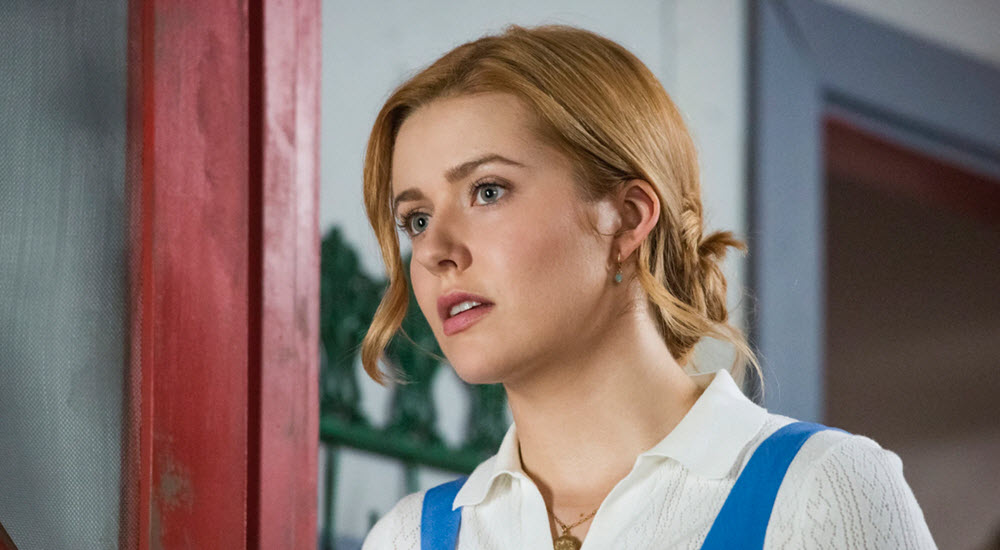Nancy Drew is a fictional amateur detective created by the publisher Edward Stratemeyer. (He also created the Hardy Boys.) She appears in a huge number of books ghostwritten by a number of authors and published under the collective pseudonym Carolyn Keene.
- The original Nancy Drew Mystery Stories book series started in 1930 and ended in 2003.
- The book series The Nancy Drew Files were launched in the 1980s, featuring an older and more professional Nancy and many romantic subplots.
- The Girl Detective book series ran from 2004 to 2012, featuring a 21st century Nancy who drives a hybrid vehicle and uses a cell phone. These books uses a 1st person narrative style.
- The Nancy Drew Diaries was launched in 2013. Just like the Girl Detective books, the Nancy Drew Diaries are written in 1st person-style.
At least 80 million Nancy Drew books have been sold and Nancy Drew books are available in over 45 languages. The character has also given rise to several films, three television shows, a series of graphic novels drawn in manga-style, and a number of computer games.

Creation and early appearances
After finding great success with his Hardy Boys series (launched in 1927), Edward Stratemeyer wanted to make a similar series but with a girl as the amateur detective. He hoped that such a heroine would be well received by girls who liked to read mystery books, and he was right.
After getting approval from the publisher Grosset & Dunlap, Stratemeyer began writing plot outlines and hired Mildred Wirt to ghostwrite the first few books under the pseudonym Carolyn Keene.
The first four books about Nancy Drew were published in 1930. Exact sales figures are not available, but the books were a resounding success.
For the 1933 Christmas shopping season, Macy´s ordered 6,000 Nancy Drew volumes from the publisher and they all sold out within days.
Why is she called Nancy Drew?
Stratemeyer suggested a long row of possible names to the publishing company and they liked the Nan Drew suggestion best, but prefered to lenghten it to Nancy Drew.
Here are some exemples of what Nancy Drew could have been called, if the publishing company had picked one of Stratemeyer´s other suggestions:
- Stella Strong
- Helen Hale
- Nan Nelson
- Diana Drew
- Diana Dare
The Nancy Drew character
The books about Nancy Drew have been written by a multitude of ghostwriters from 1930 and into the 21st century. Naturally, the character and the storylines have been adapted to suit the various zeitgeists and appeal to a contemporary audience of young readers.
In the early books, Nancy Drew is a 16-year-old high school graduate. Later on, she is an 18-year-old high school graduate.
Nancy Drew lives in the fictional United States town River Heights with her father Carson Drew, who is an attorney, and their housekeeper Hannah Gruen. Nancy´s mother is dead. In the early books, it is stated that the mother died when Nancy was ten years old. In the later books, this is changed to three. The change alters the role of Hannah Gruen; in the later books she is described as a mother surrogate for Nancy.
The Nancy Drew character is self-possessed, sweet, attractive and very talented. She speaks English and French, is an excellent painter, has studied psychology, and skillfully drives both cars and motorboats at age 16. She also excells at dancing, swimming, riding, rowing, shooting, sewing, cooking, and playing tennis, golf and bridge.
The teenage Nancy spends a lot of time solving mysteries, often together with her best friends, the cousins Bess Marvin and George Fayne. Bess is a stereotypical girly-girl while George is described as a stereotypical tomboy. Quite a few of the mysteries that Nancy solves come her way because they are cases handled by her attorney father.
Nancy grows up in a family that is well-off financially and she never lacks money throughout the series. She frequently travels abroad, visiting places such as Kenya, Austria, Japan and Costa Rica. She drives a blue roadster in the original series and a blue convertible in the later books. She never accepts monetary rewards for her detective work, but it is implied that her father´s clients reimburse expenses when she solves one of his cases.